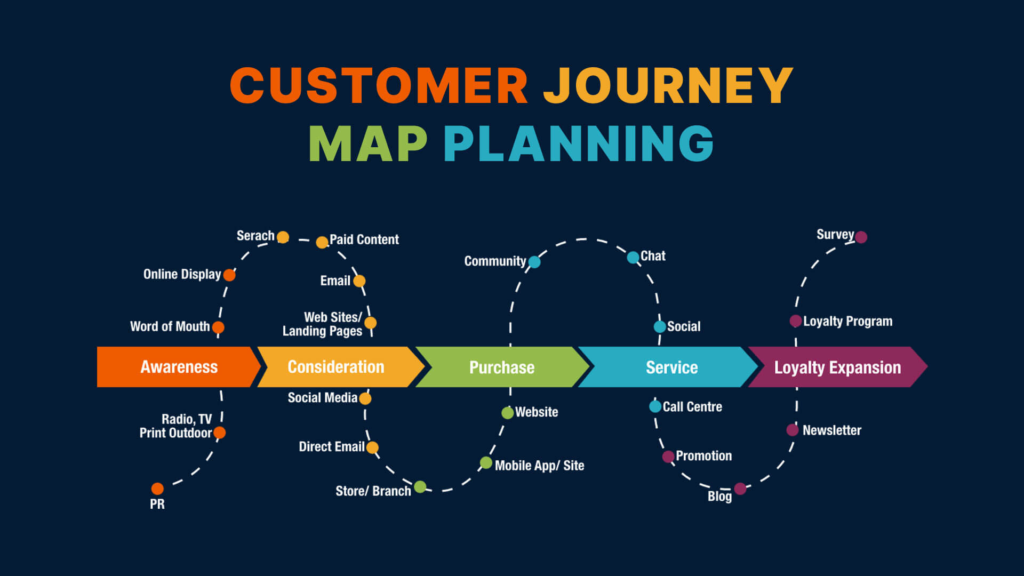Often, people confuse a customer with someone who visits the brand to try out a product and make the best use of it. However, the journey to winning a customer only begins with a person approaching a product or service from a brand. If he likes it, he buys it. This is the first purchase that makes him a buyer.
If he likes it, he buys it. This is the first purchase that makes him a buyer.
What Is Customer Journey Mapping?
It is only when a customer gets so impressed that he comes back again to buy from the same brand. If this happens regularly, he now becomes the user, and the experiences that he enjoys with each purchase that he makes are what we know as the customer journey process.
Customer Journey Mapping – The Benefits
While customer journey mapping sure sounds interesting, the scenario may be different in the case of every customer, and so the journey may be challenging. However, when done right, the following is what you will enjoy with customer mapping.
a. Better Tracking
It is a process that involves many channels of communication that need to be tracked with as much care and followed with the right market survey to give a brand better customer insights and win the customer that it needs.
b. Customer Insights
This path is often fraught with issues like customer complaints and grievances that have to be addressed. The right market survey can help a brand handle this well.
Stages Of A Customer Journey Map

The following forms a part of the customer journey map:
- Awareness
If customers are unaware that your product exists, they cannot determine whether or not they want it. A company’s objective at the beginning of the customer journey is to connect with the person and eventually draw them into the brand.
- Consideration
The following stage potential buyers go through after learning about your brand is known as “consideration” or “research.” At this point, the consumer’s viewpoint changes from one of merely knowing that your brand exists to one of appreciating the value you provide.
- Conversion
Based on their actions throughout the consideration stage, a firm can determine which clients are most likely to convert.
- Retention
During the retention phase, the objective is to convince the client that their purchase was the right one and to position them for future service renewals or further purchases.
- Brand Loyalty
Users transition from routinely pleased consumers to enthusiastic supporters of your company throughout the last stage of the customer journey.
What Is the Customer Doing?
Conducting a good survey analysis on what a customer is doing helps decide on the milestones a brand needs to use for its content, touchpoints and, most importantly, campaigns. This way, one can reach more effectively through advertisements on social media and other traditional channels.
This is, in fact, the very first stage where a brand all that he finds on observing his customers.
What Is the Customer Thinking?
Knowing a customer’s actions is not enough but should lead to the next step of wearing the customer’s shoes to determine his feelings, thoughts, and the questions he wants to ask.
In other words, it is all about empathizing with the customer to come up with a kind of product or service that is worth his money and useful to him.
How Can the Customer Encounter the Brand?
This is one of the most crucial stages in the customer mapping journey. It’s all about putting the best foot forward and keeping the customer hooked. And the fact is that this is possible only when a brand has mastered the first two stages of customer journey mapping. It mainly addressed the question of how in your customer journey.
Most of us begin from a path of general awareness. Remember that customers cannot approach you if they don’t know your brand exists.
In other words, advertising is an important part of customer mapping?
Finding Out What Is Missing
No brand must make the mistake of being overconfident in the entire journey. Because this can lead to a lot of unanswered questions as a result of the brand’s carelessness. So, this step is all about identifying the gaps that could have occurred in the whole encounter and finding a way to fill them.
How can a brand address a customer’s unmet needs?
One way to do this is to provide as many platforms for feedback by way of reviews on the website and, more importantly, social media pages.
Conclusion
And once all the above is achieved, a brand can finally get the actual customer, who will return on another day to fulfil the same need. Only then can a brand claim to reach the end of the customer mapping journey. From here, it’s all about walking together, which addresses customer grievances and needs.
Remember that problems can still arise in the future. And if you are not careful, you can still lose the customer you found after all your efforts in customer mapping, Consider that once you have won a customer, you have won a friend for life, so the two of you can climb together.



I love it when people get together and share ideas.
Great website, stick with it!
Hi! I could have sworn I’ve visited this website before but after looking at many of the posts
I realized it’s new to me. Anyhow, I’m certainly delighted I
came across it and I’ll be bookmarking it and checking back
often!
Since the admin of this web page is working, no uncertainty very quickly it will be
famous, due to its quality contents.
Thanks designed for sharing such a good thought, post is pleasant, thats why i have read it fully
I love it when people get together and share thoughts. Great website, keep it up!
I always spent my half an hour to read this weblog’s articles or reviews daily along with a mug of coffee.